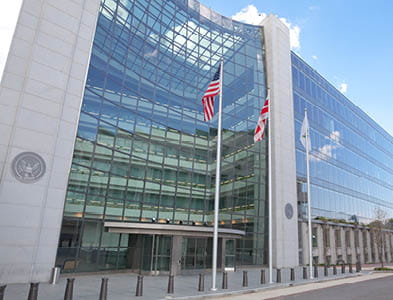Portfolio Valuation Summit Fireside Chat
Portfolio Valuation Summit Fireside Chat
In a fireside chat during the Stout Valuation Summit, Justin Burchett, Managing Director in Stout’s Valuation Advisory group, talked with Kevin Depew, Deputy Chief Economist and industry eminence program leader at RSM. The two discussed the current state of middle-market businesses, the economic factors affecting those businesses, and much more.
This interview has been edited for length and clarity.
Justin Burchett: According to the RSM US Middle Market Business Index, the numbers look good. What is this data telling us about business conditions right now?
Kevin Depew: It’s clearly very strong in the middle market. Based on our forecast, we’re about to experience a three-year period of economic growth that’s unlike anything we’ve seen since the 1980s and 1990s.
When you look at the subcomponents of that index, the parts that are worrisome are around labor, labor costs, and some of the input prices that are a result of the pandemic-induced supply chain issues. The six-month forward look remains robust and strong. Whether you’re talking about access to credit, demand for credit, inventory levels – not a lot of issues.
Justin Burchett: Businesses reported strong revenue growth. However, there were also indications of higher prices for goods and some emerging supply chain issues. We’ve seen a shortage of labor in professional services too. How do you reconcile some of those sentiments with the very strong economic numbers we’ve seen?
Kevin Depew: This takes a little bit of disaggregation because we look at things at an industry level as well as a macro level. We find there is wide variance between what’s happening both between industries and within industries.
For example, many companies report that shipping costs have risen astronomically. One client’s shipping costs increased more than 150% in Q1. That’s not as high as many of the increases that we’ve seen with other clients.
Surprisingly, our client was able to pass that increase to their own clients who were contractors needing these specific components to finish commercial real estate construction projects. The contractors were price insensitive and didn’t care what the shipping cost was. They needed the parts to be able to complete the project and move on to the next one.
Other clients in the same industry are not facing the same challenge. It really depends.
A lot of times in the media, we are bombarded with these stories, and they seem like they’re uniform. But it really varies by industry; the acute labor shortage also has a different impact depending on where you are. Some of these issues will be shorter in duration than others. For example, the supply chain issues will eventually moderate over time.
However, regarding labor shortage issues, we’re seeing false optimism. Even when we get through the crisis we’re in, the labor shortage isn’t going away. The severe labor shortage in the United States has existed prior to the pandemic. But because we had that almost decade-long output gap and a slow recovery from the Great Recession, you had a lot of people ignore the fact that we were experiencing a building labor supply shortage based on demographics, issues surrounding the H-1B visa, and challenges in getting high-tech talent into the United States.
These are issues that aren’t going to go away on the labor side, and, on the wage side, there may be some surprises in store for many companies in the long term.
Justin Burchett: How are some of the businesses and consumers adjusting to living with COVID-19? Maybe starting with how you and your team are working at RSM – Are you out seeing clients? How is that working personally, and does that translate into what you’re hearing from the client base?
Kevin Depew: At RSM, we’ve tried to put our response together in a way that makes sense. There’s significant productivity loss when you’re out on the road seeing clients. There are competing forces with the asymmetric workplace, where you have some employees who want to go back to the office right away and some who prefer to work from home.
We’ve noticed that as more people start to come back to the office, other people decide they want to be there too. Those who might have said three months ago that they would prefer to work remotely for a long period of time – that may not be the case longer term.
At the same time, a significant number of employees are leaving companies, sometimes without anything lined up afterward. When you have the magnitude of death that we’ve seen globally because of the pandemic in a very short period, and you marry that with baby boomers who are aging out of the workforce, we see a significant wealth transfer. It doesn’t mean that you have people inheriting a million dollars and they’re leaving. Sometimes it’s $50,000 or $100,000, and they’re saying, “I think the labor market is robust enough, and it’s really not back to normal, so I’m going to take some time to think about what I want to do next.”
When you look at the data around industry analytics, there is more real-time data around card spend and foot traffic at retail establishments, and there is more logistics data. These are things that companies weren’t really paying as much attention to pre-pandemic because we were still in a traditional economy transitioning to the economy of the future. But a lot of that transition has been pulled forward. Something that pre-pandemic might have been on the horizon 10 years into the future is much more immediate.
Justin Burchett: What’s the right lens to look at this environment? What do you think are some historical examples or patterns that align with what we’re seeing now?
Kevin Depew: This is number one on the list of challenges that we face with clients right now. Not everyone remembers the 1980s and 1990s. Their most recent experiences with recessions began with the dot-com crash, circa 2000–2001. If you think about the past 21 years, you have executives and investors that have dealt with both the dot-com crash and the terrorist attacks on September 11, 2001. You have the corporate debt bubble unwind, and then you have the Great Recession. Executives decide that after those three events, they’re done with equities for now, and they’re going to move to housing. Then you have the overleveraged housing, which had a dramatic effect on the broader economy and led to that decade-long period of output below potential and a slow labor market recovery. It’s no wonder that we have a long period of risk aversion that emerges in the wake of the Great Recession, and I see that aversion with the executives we deal with now. Our advice to them is that if they are operating with a playbook that looks like the one that helped them emerge from 2008, that’s the wrong one.
We don’t have a playbook for now. On the household side, there is excess savings of $1 trillion as a direct result of the pandemic. If you look at that 2000–2008 period – and it really began in the mid to late 1990s – you see households consistently running against the long-term 50-year average for personal savings, households consistently running with savings rates that were below the level of inflation, and households consistently going into savings to fund consumption to engage in home equity or going into lines of credit to fund consumption.
We are in a much more risk-averse atmosphere now. When you start to reopen the economy, sometimes you are a little bit surprised when you dig into the consumption data about where people are choosing to spend that money.
Having said that, that risk aversion tends to unwind very quickly. So, if you are operating a business where you’ve spent the last 15 years worried about “Well, demand is still a little tepid versus what I heard it was like in the 1990s, and anything that happens could be enough to take us to stall speed and create a national recession,” it’s wrong. You need to be prepared for staffing and finding talent. For example, what kind of transformation do you need to make internally to rely less on personal labor and more on automation?
A playbook from over the last 15 years is not going to serve the purpose that you need it to serve because this time looks a lot more like the late 20th century.
Justin Burchett: What are you and your team following in fiscal policy? What are you following in Washington?
Kevin Depew: There’s the increase in the corporate tax rate, potentially to 26.5%, an increase in capital gains tax to 25%, and changes to the carried interest holding period. All those are changes that would certainly have a material impact for our clients. But when we try to look at the proposals, they’re so far from being finalized that it’s hard to get a serious read on what they will look like.
The potential impact of these right now is minimal until we really understand what they say. And even on the infrastructure side, which would have a much broader impact for our client base, there’s this Balkanization of the political parties themselves. We are not really in the stages now where we were at the end of the 20th century, where you had the potential for structural regulatory change. The Tax Cut and Jobs Act of 2017, for example, was an unfunded tax cut. And here we are five years later, and we’re talking about undoing parts of it.
When you look at the composition of Congress, you no longer have those large 60%-plus majorities that characterized the 1970s–1990s for both chambers of Congress.
The norm has become “push-pull.” You’re trying to make long-term investment decisions or allocations based on potential regulatory changes, but it’s like walking on quicksand. This is something that has been very problematic on the business side for our clients, continuing to run into those issues where somebody tells them what the rules are, and then two years later, those rules are being undone.
For most of my career, if you wanted to understand what was happening in the economy, you needed to be Wall-Street-based to understand what the Federal Reserve was doing. That changed after the Great Recession.
While the Fed was the only game in town for at least the early part of that decade-long recovery, by utilizing the tools that they did and engaging in so much in unorthodox policy, they created the conditions where, now, if you want to understand what’s happening in the economy, you must understand what’s happening in Washington, DC.
We spend way more time in Washington, DC, than we do in New York. Mostly because we’re trying to understand which of these changes are likely to last and which are just bargaining chips that are going to be unwound as soon as a simple majority emerges somewhere else with different viewpoints.
Justin Burchett: We’ve seen movement in the market around a kind of democratizing of alternative assets. What are some consequences of retail investment in alternative assets?
Kevin Depew: It’s not just a democratization of alternative investments and access to those, but a broad democratization of just about everything with exposure to the capital market’s ecosystem.
I would look at this as one of the enduring ripples from the Great Recession. The last thing that was close to this in terms of magnitude and the way regulation rippled throughout the economy for decades was the Great Depression.
It doesn’t come as a surprise. The Securities and Exchange Commission (SEC) is actively looking at new investment products, investment trading platforms, and the way trading platforms entice people. Anything that increases transparency is good from our standpoint, especially when it comes to investments. We have a need for investment products that are more sophisticated than what they were even five years ago. When you look at the way things have evolved, what you can do now in a vanilla 401(k) account and a brokerage link are things that even the most sophisticated hedge funds in 1996 would’ve had a hard time executing as specific trades. It’s a work in progress, but this is part of the ripple effect and the move to rein in excesses that emerged and created the conditions for the Great Recession.
Justin Burchett: How is Environmental, Social, and Governance (ESG) investing affecting the middle market from the corporate disclosure side?
Kevin Depew: Our clients see pressure around ESG come from multiple angles now. It likely started as an investor push to extend the purpose of a firm beyond shareholder return into community return. The investors come at it from one angle, regulators from the other angle, plus borrowers, customers, employees, and even communities. The focus from those multiple stakeholders is driving our clients to ramp up their ESG focus. Some of them are just starting that journey, others are doubling down on the reporting, and other clients aren’t as open to ESG. We view that as a significant educational opportunity. There’s going to be some pain felt in the not-too-distant future for those who are not aware of the importance of ESG, possibly caused by any of those stakeholders previously mentioned. It’s only going to increase in intensity and focus.
Justin Burchett: Any last thoughts or insights?
Kevin Depew: I understand that there’s a lot of concern right now around inflation. You even hear this talk around hyperinflation or stagflation. Frankly, all of that is nonsense and not supported by any of the data. It doesn’t mean from a business standpoint that if you have a supply chain issue that forces input prices higher, that’s not something you have to deal with, nor does it mean that wage pressures going up is not something to deal with. But if you think about it, these are demand problems, and they’re the type of demand problems that are associated with robust economic growth. Meanwhile, you have a household sector that is in better shape than they’ve been in since the late 1980s and early 1990s. This is a tremendous time. I think the pessimism is still carrying over from the Great Recession, and people are placing too much emphasis on what will prove to be some enduring inflation but will quickly reside as we get later into 2022 and certainly into 2023.




